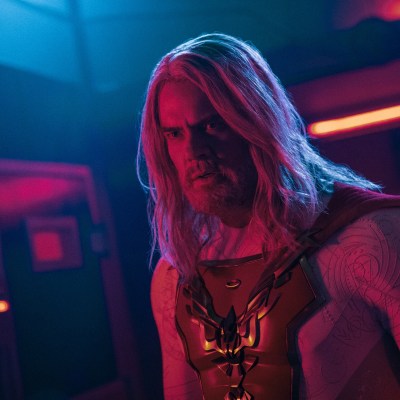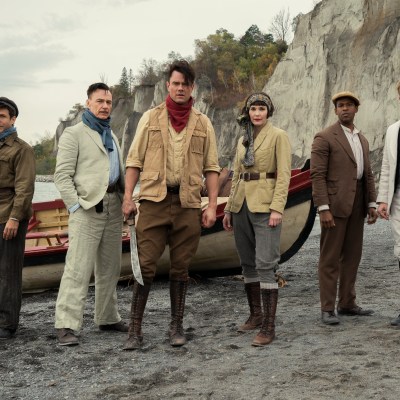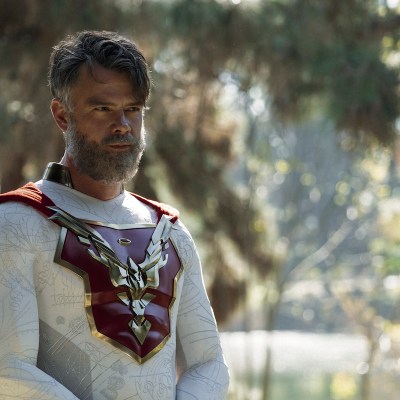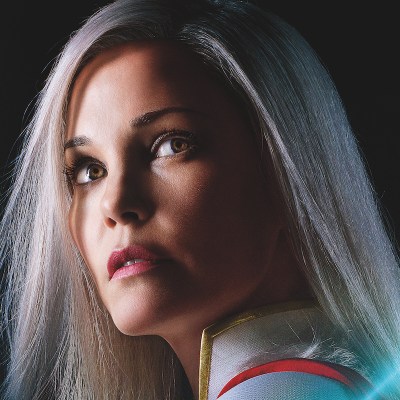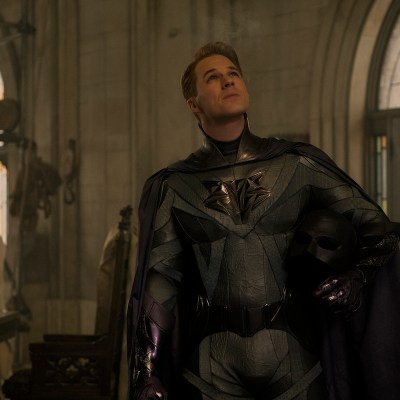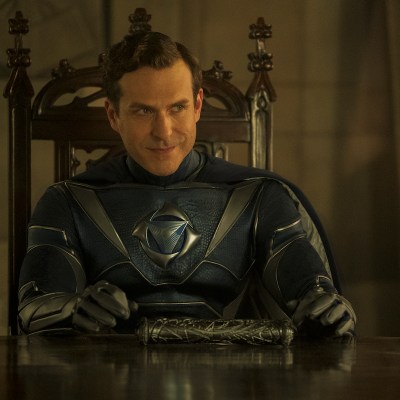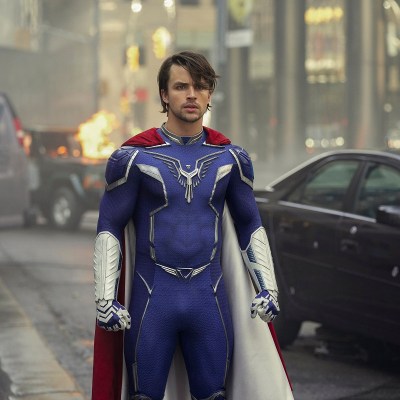Jupiter’s Legacy: From Page to Screen
Jupiter's Legacy costume designer Lizz Wolf and comics artist Frank Quitely explain how the characters' iconic looks were translated to the screen for Netflix's new show.
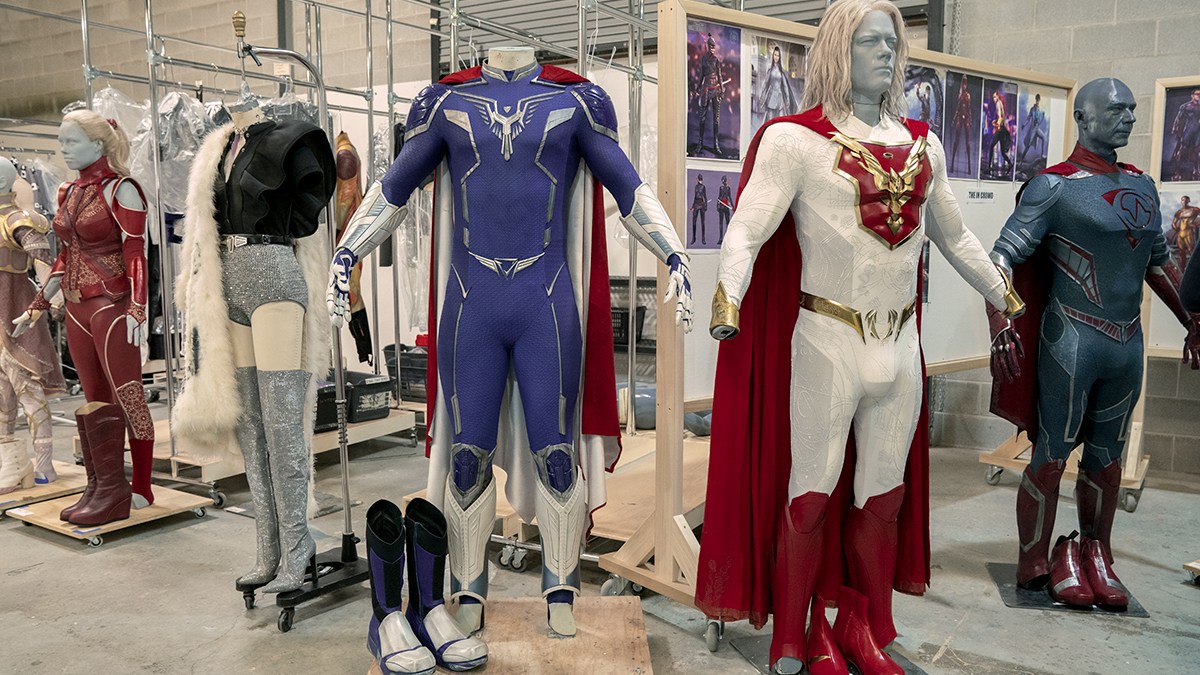
This article is presented by: 
How do you bring a comic book to life? It’s a question that studios have been struggling with since they first began making live-action superhero serials in the 1940s. Netflix’s newest comic book series adapts Image Comics’ metatext on the medium, Jupiter’s Legacy. Created by Mark Millar and Frank Quitely, the story centers on two generations of heroes. In its quest to bring this story to life, Netflix has enlisted costume designer Lizz Wolf. Though she’s new to the superhero genre, she has plenty of experience with massive actioners—including Rambo, The Expendables, and Pacific Rim: Uprising–and she dived in head-first to create a unique and vibrant visual landscape which respected the comics while bringing the texture and depth needed to translate the archetypal heroes to the small screen.
In an unusual series of events, Wolf was brought on very early in the production in order to allow her to build the sartorial universe of Jupiter’s Legacy from the ground up. It was a rare chance for the costume designer to truly create something immersive and all-encompassing. “This project was an opportunity that very few costume designers get,” Wolf says. “In order to conquer the Herculean task of bringing the vast universe that Mark Millar and Frank Quitely had created to life, I had to strap myself in for the ride of a lifetime.”
Seeing that world come to life has been nothing short of a joy for artist and Jupiter’s Legacy co-creator Quitely. While the show does bring plenty of new layers to the costuming and characters, he was blown away by how much inspiration they took from the comics. Even when things were changed he feels it was for the better.
“Where they have embellished things, it’s not so much that they’ve done their own thing,” Quitely says, “it’s that they’ve taken what we had in the comic, and they’ve added to it and translated it in a way that’s going to work better for television. It’s a very interesting process for me to see.”
So how did Wolf get started on translating such an epic series through the lens of costuming?
“As this universe is literally littered with superheroes and villains with varying degrees of power, I created a doctrine based on the character depictions in the comic book,” she says. “A platform of their capabilities and back stories. This was the connective tissue to then assemble a visual language and start the design process. This design language was a culmination of the extensive research we did for each of the superheroes and their subgroups. I relied heavily on science and nature to guide me. I was inspired by everything from the natural world, architecture, black line tattoos, ancient symbols, alchemy, microbial photography, atomic ordering, complex life forms, and parametric equations.”
When it came to directly adapting the costumes from the comics, for Wolf it was a balance of respect and inspiration.
“In the beginning, I focused on the story to inform the design,” she says. “In order to achieve a cinematic feel, we had to extrapolate what was intrinsic to telling the story through an emotional color palette, composition, function, and the capabilities of each member of the Union from the source material. Then, of course, we had to pump them into three-dimensional characters.”
When Quitely visited the set, he got to explore those three-dimensional reimaginings of his art, something that he calls a privilege. While he visited each and every part of the production, and enjoyed it all, the costume department was something of a highlight for the creator.
“They were very faithful to all the main costumes,” Quitely explains. “But because there are so many supporting characters, they had basically come up with a lot of costumes that were just inspired by what they’d already found in the comic. That was really great to see.”
Discovering the creators were fans of her designs early on was an unforgettable moment for Wolf. She was keen to talk about their impact on her, and what she called a seminal vision of superheroes. So when Millar, Quitely, and the showrunners came back with good things to say, it was “the catalyst of confidence” for her. “It was truly a professional high point to hear that Mark [Millar] had liked the designs and the direction we were going in.” Wolf says. “That acknowledgment was everything!”
Paying homage to the silhouettes and color schemes of the comics costumes was key to Wolf. But she wanted to amp up the technology and detail. With suits that have to exist over decades, it was vital to make sure that they had durability and that classic Golden Age vibe. “These suits had to travel the expanse of 100-plus years and hold up, as well as remain relevant and be able to inspire generations to come,” she says. “That was a challenge!”
Wolf battled through those challenges and found unexpected inspiration in the works of industrial 3D knitters. Diving deep into this new creative process gave Wolf a new insight, and what she called “single thread technology” led to the basis of what she describes as the show’s “suit mythology,” which also shaped the designs of the next generation’s suits.
Taking inspiration from anatomical artists like George Bridgman and Andrew Loomis, Wolf crafted a musculature for the super suits that was exaggerated yet natural. And she even built the origin of their powers, imbued following an “event,” into the suits. “This muscular structure was a molecular reaction of this event integrated into the suit itself,” she says.
That level of detail was something that immediately stuck out to Quitely. He was particularly excited by the intricate detailing that Wolf and her team added. Though the costumes might look the same from a distance, up close Quitely found an impressive array of subtle details, including emblems and alien patterns built into the material itself. “They’ve put so much thought and love and enthusiasm into the way they’ve gone about recreating this world, making it bigger and fuller in a way that will work for television,” Quitely says. “It’s been fantastic.”
Wolf was equally as enamoured with the process, describing it as a highlight of her storied career. “Designing the superheroes was an incredible thrill! I’ve experienced nothing like it. I’d have to say overall that Jupiter’s Legacy is my favorite project that I have ever done!”
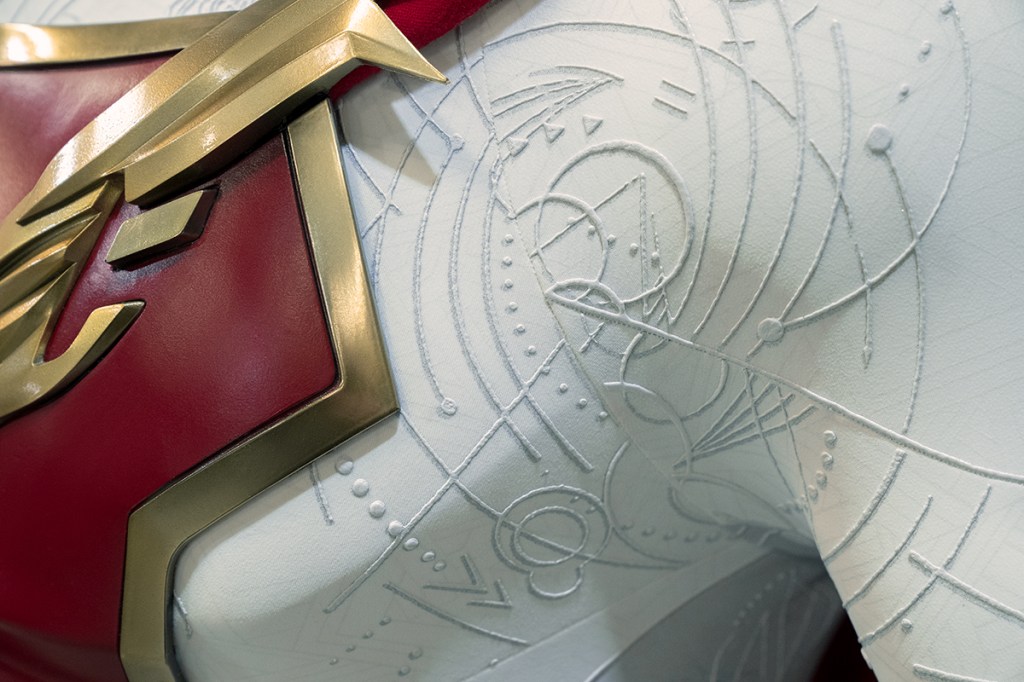
Sacred Geometry
Lizz Wolf added a unique costume detail which created its own visual language, much of which was inspired by the concept of “Sacred Geometry.” The term references the idea of ascribing meaning and symbolism to certain geometric shapes and proportions. While usually used in religious buildings and art, Wolf strived to craft a superheroic Sacred Geometry for each of the six Union members using symbolic emblems and totems which were later integrated into their suits. “These were extractions or reflections of each character’s individual journey.” Wolf explains.
While researching the look of Jupiter’s Legacy, the team discovered amateur micro photography of frozen ice crystals. This naturally occurring phenomenon developed into the overall language of the costumes. “We created a series of these lichen-like formations that represented expressions or glyphs based on an alphabet of sorts,” Wolf says. “It was used on each of the Union’s super suits as an adornment or to create declarations.”
Read more
The Utopian signified a particular challenge as his plain white suit was simple yet iconic. But Wolf built on his archetypal comic book silhouette that she felt represented the mythology of the character. While she didn’t feel like he was particularly formidable at first, once they built in Sheldon’s own Sacred Geometry which was built from “extractions from conjured celestial maps that could have guided Sheldon in his calling” the costume designer reveals, “he emerged to be very intimidating.”
Dressing Two Generations of Superheroes
Jupiter’s Legacy is a story about family, two generations of distinctly different heroes. The older and more archetypal group known as the Union are shaped by idealistic dreams and Golden Age comics. Then there’s the children of the Union, whose lives have been molded by their parents’ fame, privilege, and celebrity endorsement campaigns. When it comes to costuming, the differences are clear. The Union wear classic superhero suits, making them icons of hope and heroics. But their children rock civilian outfits, still just as recognizable but a clear rejection of the traditions of their family.
The Utopian
When it came to designing The Utopian, Quitely looked towards Superman and other classic Golden Age stories. But for costume designer Lizz Wolf, it was all about building only on what already existed in the comics. Keeping his white silhouette was key and Wolf “built on the mythology of the character,” giving him what she calls an “almost archaic, statuesque feel.” She adds that building that texture was key. “This is where the musculature was profound in exhibiting his mortal strength,” she explains. “This brought majesty to his suit, and then Josh Duhamel brought his god-like presence!”
Skyfox
One of the most significantly different costumes is that of Skyfox. Gone are his leotard/undies from the comics. Instead, Wolf crafted something with “a rugged sexiness.” The team retained his “iconic color scheme that is certainly a nod to royalty and his social status as George Hutchence.” But rather than drawing directly from the comics, they shifted tactics.
Read more
“His inspiration was part gunslinger, part playboy, 100% badass,” Wolf says. “His equipment is intentionally worn low on hips to provoke that rock star, cowboy vibe. He also has what amounts to the ‘Rosetta Stone’ of the Union embedded in his suit. The crowning element is his fractal-like Fox emblem. It’s like a talisman inspired by his fox-themed heirloom jewelry pieces from the 1920s.”
Brainwave
Another slight shift was Brainwave. In the comics, his suit evolves in the modern age. But Wolf decided to keep his iconic early look for the entire series. “This allowed us to really make his suit beam and keep his natural swagger evident. I love his suit and his veining motif. He just lights up in it and it appears to be actively circulating.”
Wolf reveals that a strange mistake ended up playing a vital part. “That fabrication was one of those divine accidents. During our R&D period, a run of printed fabric went in an unintentional direction. That material mysteriously became more radiant when stretched over his muscular structure. That mistake became the end result.”
The Union
For artist Frank Quitely and writer Mark Millar, the Union’s costumes were key, as were their influences.
“We went right back to Superman and Batman. The early Marvel and DC heroes. The heroes from the mid 1930s through the ’40s, ’50s, ’60s, and ’70s,” Quitely says. The older generation wear traditional suits making them easily identifiable as heroes. “We were looking at everything that had gone before. We were wanting things that were recognizable and reminiscent of classic superheroes, even for people that weren’t immersed in comic book culture. Most people have got a rough idea of what Superman and Spider-Man are about. We wanted to deal with archetypes and representations of superheroes that would still strike some kind of chord with people that only had a passing interest.”
The Next Generation
Growing up in Scotland shaped Quitely’s choice to make the younger generation’s uniforms their everyday outfits. “I read a lot of comics when I was younger. Desperate Dan, Dennis the Menace, The Broons. The characters tend to wear the same clothes,” he explains. “It’s the same with your Saturday morning cartoons like Scooby-Doo. Their costumes are part of the aesthetic of each character. They wear the same clothes and colors all the time because it makes them more recognizable. To some extent we did that with the characters in Jupiter’s Legacy that didn’t have a superhero costume. Even if the clothes change, they have a recognizable style. And it’s important to try to stick with that because it helps build the character and it helps make the visual storytelling easy to follow.”
Jupiter’s Legacy premieres on Netflix on May 7. Read more about the series in our special edition magazine!

